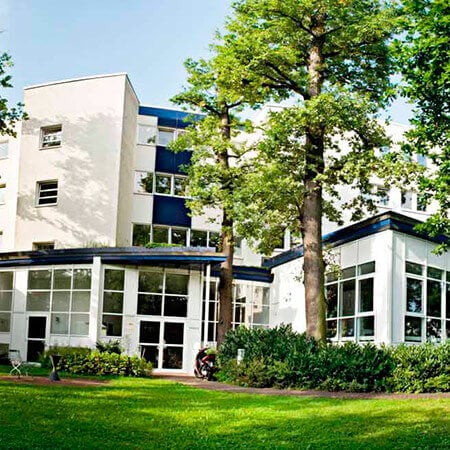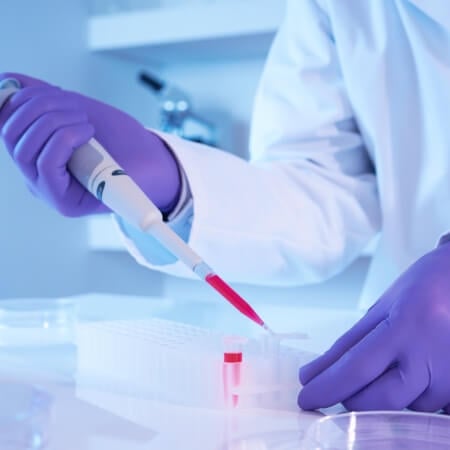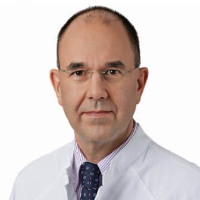Diabetic Neuropathy — Stem Cell Therapy for Diabetic Neuropathy: treatment in the Best Hospitals of Germany
Treatment prices are regulated by national law of the corresponding countries, but can also include additional hospital coefficients. In order to receive the individual cost calculation, please send us the request and medical records.

Department of Alternative Medicine
The Department of Alternative Medicine specializes in the treatment of various types of cancer and chronic diseases using the methods of integrative medicine. The department belongs to few medical facilities in Germany, which offer individual treatment regimens using biological and integrative techniques. The department has state-of-the-art medical technologies, as well as a multidisciplinary team of competent specialists in various medical fields, including therapists, oncologists, gynecologists, urologists, orthopedists, nephrologists, surgeons, cardiologists and others. In addition, the department has a pleasant and friendly atmosphere.


Department of Regenerative Medicine
The Department of Regenerative Medicine offers all modern methods of stem cell therapy. The medical facility performs stem cell therapy based on the classical protocol, stem cell secretome (SCS) treatment, bone marrow concentrate (BMC) therapy, mesenchymal stem cell therapy, and PRP therapy that involves the injection of platelet-rich plasma. It should be noted that the medical facility has become a pioneer in Europe in the field of therapy with autologous mesenchymal stem cell secretome (SCS), the secretory products of stem cells. The department's medical team diagnoses and treats a wide range of diseases such as multiple sclerosis, rheumatoid arthritis, amyotrophic lateral sclerosis, Parkinson's disease, osteoarthrosis, knee injuries, spinal cord injuries, stroke, xerostomia, Lyme disease, urinary incontinence, and erectile dysfunction. The department also offers cell therapy for rejuvenation and hair loss treatment. The department has well-equipped diagnostic rooms and laboratories where biochemical, genetic, and imaging tests are performed. The specialists take time to study the patient's medical history and perform a comprehensive diagnosis, which helps to develop the most effective treatment regimen. The department's physicians work with innovative treatment methods that have passed all stages of clinical trials, proving their high efficiency and safety. The medical facility is the first cell therapy center in Europe to be certified according to German and European standards.

Stem cells (SCs) are increasingly used in chronic diseases associated with organ and tissue damage. They have regenerative potential, as they differentiate into specialized cells and secrete growth factors that stimulate metabolism, improve blood supply and trigger tissue self-renewal.
Content
- What is diabetic neuropathy
- What stem cells are used in diabetic neuropathy
- How cell therapy is performed
What is diabetic neuropathy
Diabetic neuropathy is one of the most frequent complications of diabetes mellitus. The lifetime risk of its development in diabetic patients is up to 50%. In 15% of patients, neuropathy becomes the cause of diabetic foot. Currently, there are no treatments that can stop the development of polyneuropathy. Alpha-lipoic acid and benfotiamine are considered the standard treatment, while the most promising innovative methods are gene and cell therapy.
The main symptoms of neuropathy are a burning sensation, paresthesias (unusual sensations), aching pain, and contact discomfort. There may be attacks of stabbing pain that worsen at night. There is often a loss of sensitivity to touch, vibration, pricking, hot and cold.
The cause of these symptoms is nerve damage. But if nerves are repaired, the symptoms diminish. The stem cell treatment for diabetic neuropathy is aimed at stimulating regeneration. This technique provides good results, as SCs can differentiate into nerve cells, as well as have neurotrophic, anti-inflammatory effects and stimulate the growth of new blood vessels, improving the blood supply to the nerve tissue.
What stem cells are used in diabetic neuropathy
In research, doctors are trying to treat peripheral neuropathy with stem cells of bone marrow origin, embryonic, pluripotent SCs, endothelial progenitor cells, mesenchymal SCs. All these methods are still experimental, but some clinics in developed countries already offer cell therapy to their patients. You can undergo stem cell therapy for diabetic neuropathy in Germany by choosing a suitable German clinic on the Booking Health website.
Features of different types of SCs as treatments for diabetic neuropathy:
- Bone marrow-derived SCs. They enhance the production of VEGF, FGF-2, IGF-1 and NOS-3, increasing the density of small vessels that supply peripheral nerves. In preclinical studies, bone marrow-derived SCs demonstrate good results for sciatic nerve repair.
- Pluripotent SCs. These are derived from mature somatic cells. The advantage of these SCs is that they can turn into any other specialized cells, so they are potentially effective even in the advanced stages of polyneuropathy. Like other types of SCs, they are being investigated in preclinical studies.
- Endothelial progenitor cells (EPC). They are obtained from umbilical cord and peripheral blood. Experiments show that after intramuscular EPCs injections enhance neovascularization of nerves, improving their blood supply and restoring function.
- Mesenchymal SCs. The most common type of SCs, which is used not only in research, but also in clinical practice. More than a thousand studies have already been conducted with mesenchymal SCs and they have been approved for the treatment of several diseases. In neuropathy, these cells are not yet a standard treatment but may be used in clinical trials.
- Tooth pulp SCs. These are mesenchymal cells that can turn into various cells, including neuronal ones. Experiments show that these SCs increase the thickness and area of myelin, protecting nerves.
How cell therapy is performed
So far, neuropathy stem cell treatment in Germany has not been standardized. The approach to therapy varies from hospital to hospital.
SCs are mainly obtained from the patient's blood or bone marrow. They are then injected intravenously or into the area of impaired innervation as an intramuscular injection. The procedure may be repeated at intervals of several weeks.
You can check the cost of stem cell therapy for neuropathy in Germany and choose a cell therapy center on the Booking Health website. If you make an appointment through our service, the prices for medical services for you will be lower than if you apply directly to the clinic (the average cost of treatment is reduced due to the exclusion of additional fees for foreign patients).
Authors:
The article was edited by medical experts, board certified doctors Dr. Nadezhda Ivanisova and Dr. Vadim Zhiliuk. For the treatment of the conditions referred to in the article, you must consult a doctor; the information in the article is not intended for self-medication!
Our editorial policy, which details our commitment to accuracy and transparency, is available here. Click this link to review our policies.
Sources:

